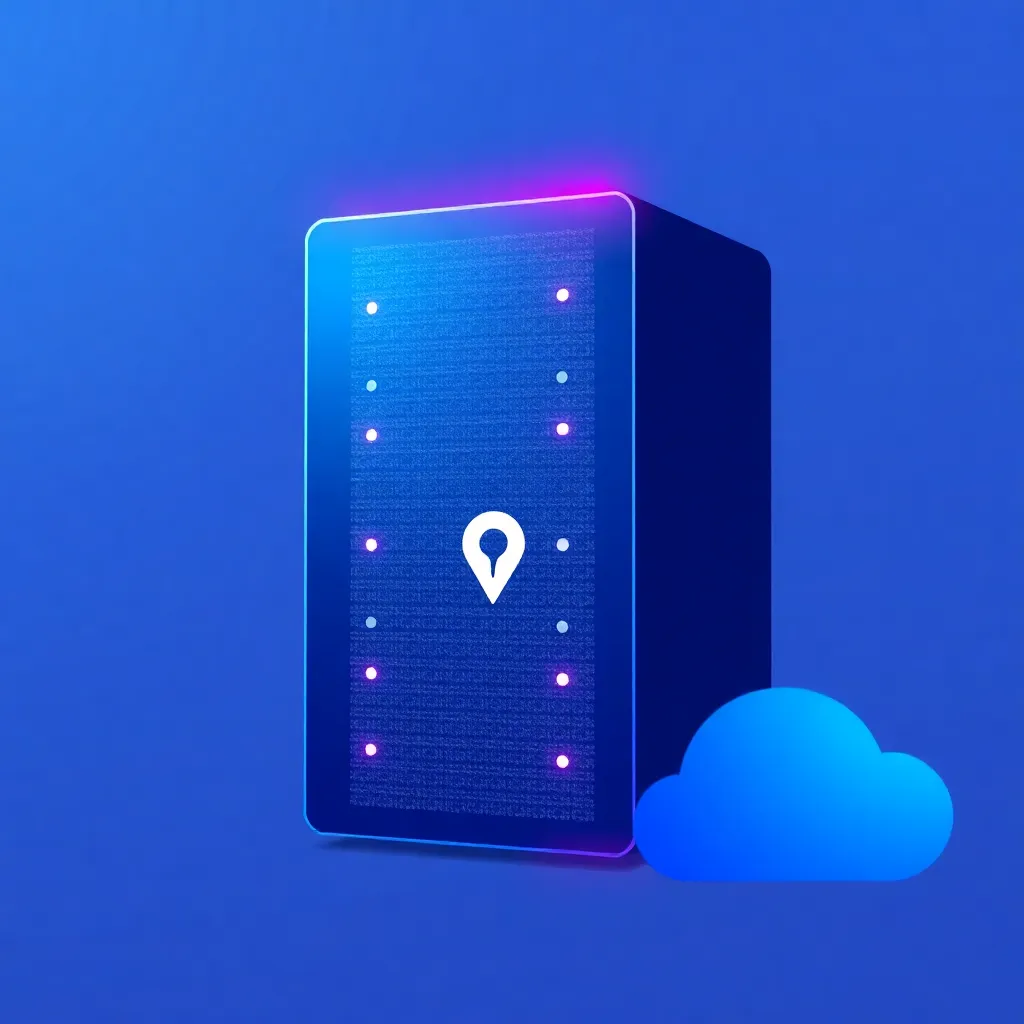Introduction to the Bare Metal Cloud
In the ever-evolving world of cloud computing, a powerful alternative to the traditional virtual cloud has emerged: the bare metal cloud. This innovative technology combines the advantages of dedicated hardware with the flexibility and scalability of the cloud, offering companies a unique solution for their IT infrastructure.
What is Bare Metal Cloud?
Bare Metal Cloud refers to a cloud computing service where customers can rent dedicated physical servers from a remote provider. In contrast to traditional cloud services that rely on virtualization, users are given exclusive access to the entire hardware of a server. This enables maximum control over resources and eliminates potential performance losses due to shared environments.
Advantages of the Bare Metal Cloud
Superior performance
A key advantage of the bare metal cloud is its superior performance. As there is no virtualization layer between the hardware and the applications, companies can exploit the full performance of the physical resources. This makes bare metal cloud particularly attractive for compute-intensive workloads, big data analysis, artificial intelligence and machine learning applications.
Increased security
Security is another advantage of this technology. Dedicated hardware allocation minimizes potential risks associated with multi-tenant environments. Companies have complete control over their security measures and can implement customized solutions that meet their specific compliance requirements.
Maximum flexibility and adaptability
Flexibility and adaptability are key features of the Bare Metal Cloud. Users can configure their servers according to their individual needs, from the operating system to specific software stacks. This freedom enables companies to tailor their IT environment optimally to their business requirements.
Scalability
Despite the physical nature of the servers, the bare metal cloud offers the scalability expected of cloud services. Resources can be quickly provisioned or scaled back as needed, enabling agile adaptation to changing business requirements. This is particularly beneficial for companies with fluctuating workloads or seasonal peaks.
Cost efficiency
The cost structure of the bare metal cloud can be attractive for many companies. Although the initial costs can be higher than with virtual cloud instances, the investment can pay off in the long term thanks to improved performance and the avoidance of overprovisioning. In addition, many providers offer flexible billing models that allow companies to only pay for the resources they actually use.
Avoiding the "noisy neighbor" effect
An important aspect of the bare metal cloud is avoiding the so-called "noisy neighbor" effect. In virtual cloud environments, the activity of other users on the same physical server can affect performance. The bare metal cloud eliminates this problem, as each customer has exclusive access to the hardware.
Areas of application for the Bare Metal Cloud
The areas of application for the Bare Metal Cloud are diverse. In addition to the aforementioned applications in the areas of big data and artificial intelligence, it is ideal for:
- High-throughput databases: Bare metal servers offer the necessary performance and reliability for data-intensive applications such as Oracle or SQL Server.
- ERP systems: Enterprise resource planning systems benefit from the stability and performance of dedicated hardware.
- Financial applications: Applications with strict compliance requirements, such as in the financial sector, benefit from increased security and control.
- Graphics-intensive workloads: 3D rendering, video processing and other graphics-intensive applications require powerful hardware, which Bare Metal Cloud can provide.
- Game development and hosting: Developers of online games and multiplayer hosting benefit from the low latency and high performance.
Trends and innovations in the bare metal cloud
One interesting trend is the increasing use of bare metal clouds for edge computing. By placing powerful, dedicated servers closer to where the data is generated, latency times can be minimized and large volumes of data can be processed in real time. This is particularly relevant for IoT applications, autonomous driving and smart city initiatives.
Another significant trend is the integration of bare metal cloud with containerized technologies such as Kubernetes. This allows companies to take advantage of container orchestration while benefiting from the high performance and security of dedicated hardware. This hybrid solution offers an excellent balance between flexibility and performance.
Integration into existing IT infrastructures
The integration of bare metal cloud into existing IT infrastructures requires careful planning. Companies need to analyze their workloads to decide which applications would benefit most from dedicated hardware. It is also important to rethink the network architecture to ensure a seamless connection between bare metal servers and other cloud resources.
Another aspect to consider when opting for bare metal cloud is the portability of applications. As the environment is less abstracted than in virtual clouds, migrating workloads between different providers or back to an on-premises environment can be more complex. This underlines the importance of a well thought-out cloud strategy and the use of standards and technologies that support portability.
Choosing the right provider
Choosing the right provider is critical to the success of a bare metal cloud implementation. Factors such as geographical availability, support options, network performance and additional services such as backup and disaster recovery should be carefully evaluated. Some providers also offer specialized bare metal solutions for specific industries or use cases, which should be considered when making a selection.
Companies should also check the scalability and flexibility of the provider. A good provider not only offers dedicated hardware, but also comprehensive management tools that make it easy to manage and monitor the servers.
Challenges with the bare metal cloud
Although Bare Metal Cloud offers many advantages, there are also challenges that companies need to consider:
- Higher administrative overhead: Managing dedicated servers requires more technical expertise and resources compared to fully managed cloud services.
- Limited portability: As mentioned above, migrating workloads between different bare metal providers or back to on-premises infrastructure can be more complex.
- Long-term costs: While bare metal cloud can be cost-efficient in the long term, the initial investment is often higher than with virtual cloud solutions.
- Scaling times: Although Bare Metal Cloud is scalable, adding or removing physical servers can take more time than virtual instances.
Best practices for implementing the bare metal cloud
To get the best out of the bare metal cloud, companies should follow a few best practices:
- Workload analysis: Identify the applications that benefit most from dedicated hardware and prioritize them for migration.
- Automation and orchestration: Use tools to automate deployment and management to minimize administrative overhead.
- Develop security strategies: Implement comprehensive security measures, including firewalls, intrusion detection systems and regular security audits.
- Performance monitoring: Continuously monitor the performance of bare metal servers to identify and resolve bottlenecks at an early stage.
- Backup and disaster recovery planning: Make sure that regular backups are created and a disaster recovery strategy is in place to prevent data loss.
Comparison of bare metal cloud and virtual cloud services
A direct comparison between bare metal cloud and traditional virtual cloud services helps to better understand the differences and respective advantages:
- Performance: Bare Metal offers higher performance as there is no virtualization layer.
- Security: Dedicated hardware offers higher security compared to multi-tenant environments.
- Flexibility: Virtual cloud services are often more flexible in terms of scaling and management, while bare metal cloud offers more control.
- Costs: Virtual cloud services can be more cost-effective initially, while bare metal cloud can save money in the long term through higher performance and efficiency.
- Management: Virtual cloud services are often easier to manage, while bare metal cloud requires more technical knowledge.
The future of the bare metal cloud
The future of the bare metal cloud looks promising. With the increasing demand for high-performance computing and the growing importance of data protection and compliance, more and more companies will recognize the benefits of this technology. Innovations in areas such as automated provisioning and AI-powered optimization will further simplify the management of bare metal resources and increase their attractiveness.
Furthermore, integration with modern technologies such as Kubernetes and other container orchestration systems will expand the application options and offer companies even greater flexibility. The development towards hybrid and multi-cloud strategies will consolidate the use of bare metal cloud as an integral part of modern IT infrastructures.
Conclusion
In summary, the Bare Metal Cloud is a powerful and flexible option for organizations that require maximum control, security and performance. It offers an ideal solution for compute-intensive workloads, sensitive data processing and applications that benefit from dedicated resources. While it may not be the best choice for every use case, it is a valuable addition to the spectrum of cloud computing options. Companies looking to drive their digital transformation and optimize their IT infrastructure should consider the bare metal cloud as a potential component of their overall strategy.
Through careful planning, selecting the right provider and implementing best practices, companies can take full advantage of the bare metal cloud and take their IT infrastructure to the next level.



